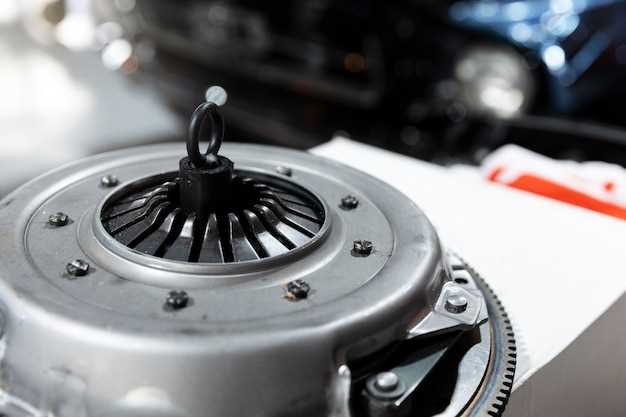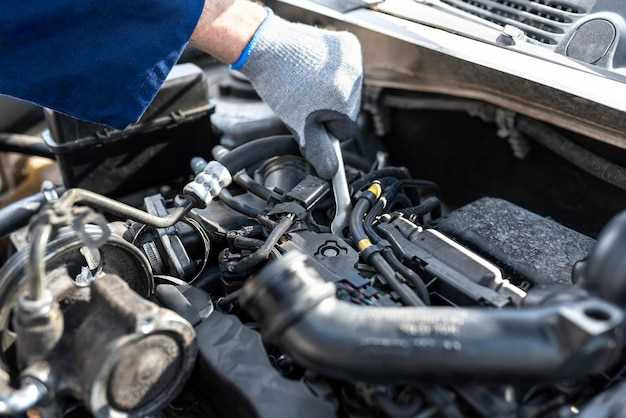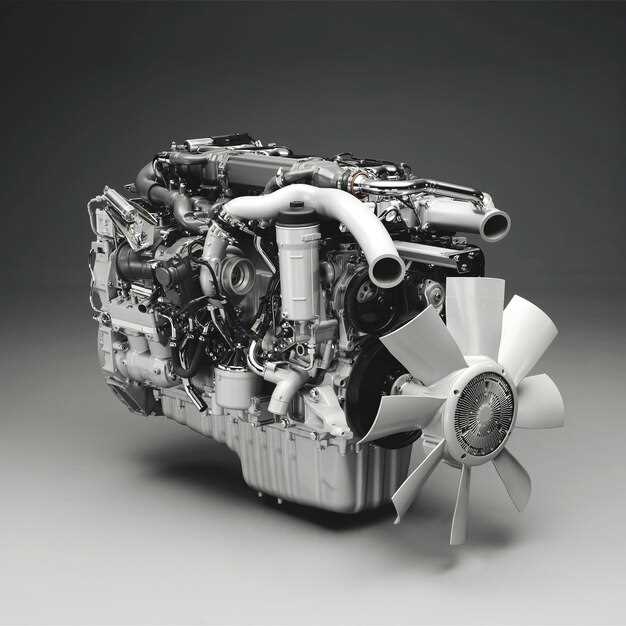
The performance of a V8 engine is heavily reliant on its ability to maintain optimal operating temperatures. One of the most critical aspects of this is the cooling system, which plays a vital role in preventing overheating. When an engine runs at excessively high temperatures, it can suffer from various issues, such as decreased efficiency, increased wear, and even catastrophic failure. Therefore, understanding the significance of cooling systems is essential for anyone involved in performance tuning or maintenance of V8 engines.
A well-designed cooling system regulates the engine’s temperature by dissipating heat generated during combustion and friction. This not only enhances the engine’s efficiency but also extends its longevity. Components like the radiator, thermostat, and water pump work in tandem to ensure that the engine operates within the ideal temperature range. If any of these components fail or underperform, the risk of overheating increases significantly, jeopardizing both power output and engine reliability.
Moreover, the link between a cooling system and overall vehicle performance cannot be overstated. For car enthusiasts and racers, even a slight drop in engine temperature can lead to improvements in horsepower and torque. High-performance V8 engines are particularly sensitive to temperature changes; thus, maintaining an effective cooling system is crucial for those seeking to maximize their vehicle’s potential. In this article, we will explore the intricacies of cooling systems, their components, and how they directly influence the performance of V8 engines.
Understanding the Basics of V8 Engine Cooling
The performance of a V8 engine heavily relies on an efficient cooling system. As these engines generate significant horsepower, they also produce substantial heat. A well-functioning cooling system is essential to prevent overheating, which can lead to severe engine damage.
At its core, a V8 engine cooling system consists of several key components: the radiator, water pump, thermostat, and cooling fans. The radiator serves as a heat exchanger, dissipating heat from the engine coolant into the air. The water pump circulates coolant through the engine and radiator, ensuring a continuous flow that aids in heat transfer.
The thermostat plays a crucial role in regulating engine temperature. It opens and closes to maintain the optimal operating temperature by controlling the flow of coolant. If the engine temperatures rise too high, the thermostat opens to allow more coolant to circulate, preventing overheating.
Cooling fans complement the radiator by increasing airflow, especially at low speeds or when the vehicle is stationary. These fans activate based on the temperature readings from the engine, ensuring that the radiator effectively cools the coolant that has absorbed heat from the engine.
In summary, understanding the basics of V8 engine cooling is crucial for maintaining optimal performance. An efficient cooling system prevents overheating and contributes to the longevity of the engine, allowing it to perform at its best under demanding conditions.
Key Components of a V8 Cooling System

The cooling system of a V8 engine plays a critical role in maintaining optimal operating temperatures and preventing overheating. Several essential components work together to ensure efficient cooling performance.
Radiator: The radiator is a crucial element that dissipates heat from the engine coolant. It consists of a series of metal tubes and fins that allow air to flow through, effectively transferring heat away from the coolant as it passes through. The size and design of the radiator significantly influence the cooling efficiency, especially in high-performance applications.
Water Pump: The water pump circulates coolant throughout the engine and the radiator. It is typically driven by a belt connected to the engine, creating a continuous flow of coolant that absorbs heat from the engine block and transfers it to the radiator for cooling. A well-functioning water pump is vital for maintaining proper coolant flow, which is essential for engine performance.
Thermostat: The thermostat regulates the engine’s temperature by controlling the flow of coolant to the radiator. It opens and closes based on the coolant temperature, ensuring that the engine warms up quickly while preventing it from overheating. A malfunctioning thermostat can lead to temperature fluctuations and reduced engine efficiency.
Coolant Hoses: These flexible hoses transport coolant between various components of the cooling system. High-quality hose materials are essential for withstanding heat and pressure. Regular inspection and replacement of worn hoses are necessary to prevent leaks and maintain system integrity.
Cooling Fans: Electric or mechanical fans aid in air movement through the radiator when the vehicle is stationary or moving at low speeds. These fans help maintain optimal airflow, enhancing the cooling process, especially during demanding driving conditions. The operation of cooling fans is often controlled by temperature sensors that activate them as needed.
Expansion Tank: This component accommodates changes in coolant volume as it heats and cools. It prevents excessive pressure build-up in the cooling system by allowing coolant to expand and contract freely. A properly functioning expansion tank is vital for overall system efficiency and performance.
Each of these components plays a significant role in the effectiveness of a V8 cooling system. Proper maintenance and timely replacement of parts are essential to ensure the system operates at its best, thereby enhancing the performance and longevity of the engine.
Impact of Overheating on V8 Engine Performance
Overheating is one of the most critical issues that can affect the performance of a V8 engine. When the engine temperature exceeds optimal levels, it can lead to a range of detrimental effects that compromise power output, efficiency, and longevity.
One of the primary impacts of overheating is the loss of power. As the engine temperature rises, the air-fuel mixture becomes less combustible. This results in incomplete combustion, ultimately reducing the engine’s horsepower and torque. Drivers may notice a decrease in acceleration and overall responsiveness, impacting their driving experience.
Overheating can also cause significant damage to engine components. Excessive heat can warp cylinder heads and engine blocks, leading to gasket failures and potential oil leaks. In severe cases, this can result in a catastrophic engine failure that requires an expensive rebuild or replacement. The increased thermal stress can also adversely affect other components, such as pistons and bearings, further exacerbating performance issues.
In addition to mechanical failures, overheating can lead to increased emissions. When the combustion process is inefficient due to high temperatures, unburned fuel produces harmful pollutants. This not only violates environmental regulations but can also lead to costly fines and repairs related to emission control systems.
To maintain optimal performance, it is crucial to prevent overheating by ensuring the cooling system is functioning correctly. This includes regular checks of coolant levels, inspecting hoses and radiators for leaks, and replacing thermostats when necessary. By addressing potential issues early, drivers can avoid the adverse effects associated with overheating and ensure their V8 engine operates at its best.
Signs of Cooling System Failure in V8 Engines
Recognizing the signs of cooling system failure is crucial for maintaining the optimal performance of V8 engines. A well-functioning cooling system prevents overheating and ensures the engine operates within its designed temperature range. Here are some key indicators of cooling system issues in V8 engines:
| Sign | Description |
|---|---|
| Overheating | The engine temperature gauge may rise above normal levels, often accompanied by steam or smoke emanating from the engine bay. |
| Coolant Leaks | Puddles of coolant underneath the vehicle or visible coolant stains can indicate a leak in hoses, the radiator, or the water pump. |
| Low Coolant Levels | Consistently low coolant levels without an obvious leak may suggest internal engine issues or a failing cooling system component. |
| Coolant Discoloration | Coolant that appears rusty or contains debris may indicate corrosion within the cooling system, reducing its effectiveness. |
| Strange Noises | Unusual sounds, such as whining or grinding, often signify a failing water pump or other cooling system components. |
| Temperature Fluctuations | Inconsistent temperature readings can result from a malfunctioning thermostat or issues within the cooling system. |
Prompt identification of these symptoms is crucial to prevent severe engine damage. Regular maintenance and inspection of the cooling system components can help ensure the longevity and performance of V8 engines.
Maintenance Practices for Optimal Cooling Efficiency
Maintaining an optimal cooling system is crucial for the performance of a V8 engine, as overheating can lead to severe engine damage and performance loss. Regular maintenance practices help ensure that the cooling system operates efficiently and effectively. Here are some essential maintenance tips:
- Regular Coolant Checks:
Periodically check the coolant level and condition. Low or contaminated coolant can result in insufficient heat transfer, leading to overheating. Ensure the coolant is replaced according to the manufacturer’s guidelines.
- Inspect Hoses and Connections:
Examine all hoses for signs of wear, cracks, or leaks. Replace any damaged hoses to prevent coolant loss, which can cause overheating. Ensure all connections are secure to maintain proper pressure within the cooling system.
- Flush the Cooling System:
Perform a coolant flush regularly to remove debris and contaminants. This process helps to maintain optimal heat transfer and avoid blockages within the radiator and engine.
- Check the Radiator:
Inspect the radiator for any damage, such as corrosion or leaks. Clean the radiator fins and ensure that no debris is obstructing airflow. A well-functioning radiator is essential for effective cooling.
- Test the Thermostat:
A malfunctioning thermostat can lead to improper coolant flow. Ensure the thermostat opens and closes at the correct temperatures. Replace it if it shows signs of failure.
- Monitor Temperature Gauge:
Keep a close eye on the engine temperature gauge. Any unusual fluctuations may indicate a cooling system problem that requires immediate attention to prevent overheating.
- Inspect Water Pump:
A defective water pump can severely impact coolant circulation. Regularly check for leaks or unusual noises from the pump, and replace it if necessary.
- Air Conditioning System Maintenance:
A well-maintained A/C system also contributes to engine cooling. Ensure that the A/C is regularly serviced to prevent additional strain on the cooling system.
Implementing these maintenance practices will help maximize the cooling efficiency of your V8 engine, significantly reducing the risk of overheating and ensuring consistent performance.
Upgrades and Modifications for Enhanced Cooling Solutions

To prevent overheating and ensure optimal performance, V8 engines can benefit significantly from various upgrades and modifications in their cooling systems. One of the most effective enhancements is the installation of a high-performance radiator. Upgraded radiators typically have a larger capacity and improved fin designs, which enhance heat dissipation and allow for more efficient coolant flow.
Another crucial modification involves upgrading the coolant itself. Utilizing a high-quality coolant with superior heat transfer properties can aid in maintaining lower operating temperatures, thereby reducing the risk of overheating. Additionally, incorporating coolant additives can enhance the effectiveness of the cooling system by preventing corrosion and scaling within the engine.
Fans play a vital role in engine cooling, so replacing factory-installed fans with high-efficiency electric fans can provide a significant boost. Electric fans can be more effective in managing airflow, especially at low speeds, and can reduce the load on the engine, further preventing overheating.
Replacing stock hoses with silicone hoses can also be advantageous. Silicone hoses are more durable and resistant to heat and pressure, ensuring a reliable connection throughout the system. This change minimizes the chances of hose failures that could lead to coolant leaks and overheating.
Finally, a performance water pump can significantly enhance coolant circulation. Upgrading to a high-capacity water pump ensures that coolant flows efficiently through the engine, allowing for better temperature regulation and reducing the likelihood of overheating under demanding conditions.




